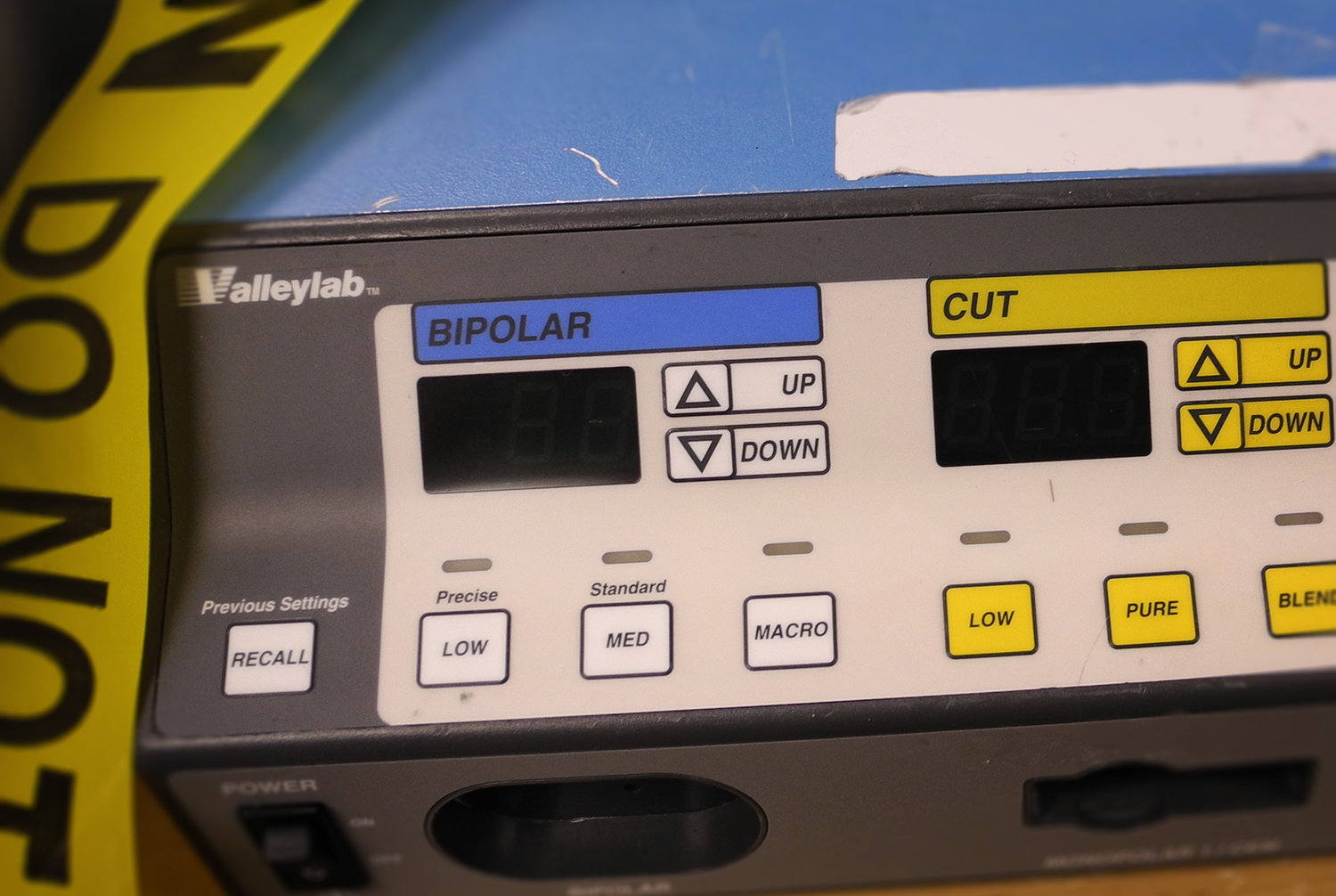
This post is not about a particular forensic engineering investigation; instead, it’s a set of general recommendations for healthcare facilities to use when responding to medical device-related incidents.
I have presented this material many times in recent years. When the audience includes risk management professionals, I emphasize the clinical considerations and the FDA reporting requirements. When I’m addressing HTM (healthcare technology management) professionals, I focus on technical issues and how to support patient care providers. And when I’m talking to biomedical engineering students, the people who will create the next generation of medical technology, the lecture is an introduction to what happens after newly-minted devices enter the clinical environment.
Issues
Medical device-related incidents are much less common than other patient incidents that risk management professionals deal with on a regular basis — adverse drug events, medical and surgical incidents, and other misadventures. Although medical devices are omnipresent in modern healthcare delivery, they are generally reliable. But even though they usually function as designed, they can contribute to adverse events if they are poorly designed, are difficult to use, or are unsuitable for a particular clinical application.
In my experience, risk management professionals are adept at managing a wide variety of patient incidents. However, the relative rarity of medical device-related incidents means that they may not be familiar with best practices in medical device-related incident management. That’s why I put together this list.
Discussion
Here’s what I’ve learned about managing medical device-related incidents:
1. Take care of the patient. This admonition is unnecessary for clinicians. Their first and highly-appropriate instinct is to push the equipment aside and focus on the patient. HTM professionals — clinical engineers and biomedical equipment technicians — sometimes wish clinicians would take a bit more care with the equipment and may need to remind themselves that patients come first.
2. Report to Risk Management. When I ask risk managers about their biggest challenge, they often say it’s getting clinicians to report incidents promptly. When I ask HTM professionals, they say it’s not knowing that the device in their shop is there for incident investigation rather than routine repair. Make good reporting easy. Establish good communication between risk management and HTM.
3. Sequester the device. Put the equipment in a secure location so that it is not tampered with or inadvertently returned to service, especially if there is an expectation of legal action. The primary objective here is preservation of evidence. Do not change the device settings. Save accessories and disposables (including packaging showing lot numbers). Plug in the device to maintain event logs.
4. Preserve patient data. This includes data within the medical device, printouts produced by the device, electronic and paper data in the patient record, and electronic data from networked medical devices stored centrally. Without these data it’s difficult to get a clear picture of what happened. A thorough understanding of the event is essential to reduce the likelihood of its recurrence.
5. Investigate the incident. For some device-related incidents, HTM professionals within the organization have the appropriate skills. In other cases, the facility may wish to get additional expertise or an independent perspective. One option is to work with the device manufacturer — but note that the interests of the organization and the manufacturer are not identical. Another option is to work with an independent medical device expert.
6. Report to the FDA. Medical device reporting regulations require “device user facilities” (including hospitals) to file reports when they have information that reasonably suggests a device has or may have caused or contributed to a patient’s serious injury or death. There may also be state reporting requirements. I recommend also reporting to ECRI Institute (see Resources below).
7. Avoid recurrences. It’s important to communicate lessons learned during a medical device-related incident investigation. Sometimes additional training is appropriate for device users; however, that can be a too-easy answer; effective risk mitigation requires deep consideration of the entire system in which care is delivered. Improvements in HTM practices — technician awareness, maintenance procedures, management analytics — may also be appropriate.
Forensic Engineering Considerations
If healthcare facilities always followed these recommendations, the forensic engineer’s work would be much easier. But one of the fascinating aspects of forensic engineering is the opportunity to shed light on a difficult situation in the absence of complete information.
Resources
FDA Medical Device Reporting (www.fda.gov/MedicalDevices/Safety/ReportaProblem).
ECRI Institute device problem reporting (www.ecri.org/pages/ReportADeviceProblem.aspx).
Podcast: Medical Device Incident Investigation. Baretich (2015). Healthcare Tech Talk, Episode 33. (healthcaretechtalk.net/investigations/).
